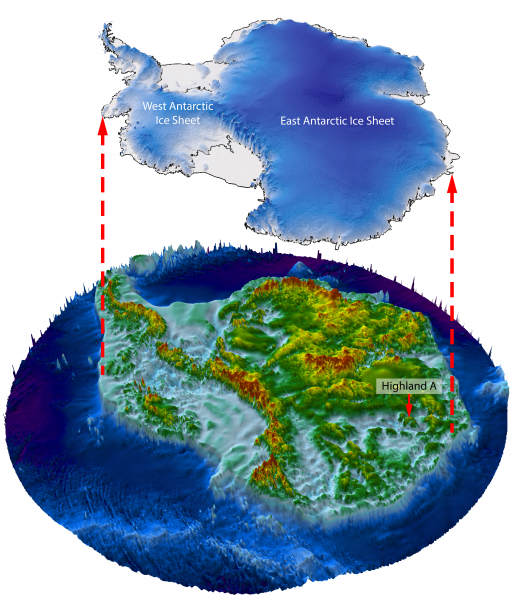Aerial Surveys Reveal Landscape Beneath Antarctic Ice
December 8, 2024

Long before Antarctica froze over, rivers carved valleys through mountains in the continent’s east. Now, millions of years later, researchers have discovered an unexpected remnant of this ancient highland landscape thanks to an aerial survey campaign led by the University of Texas Institute for Geophysics.
The landscape of ancient valleys and ridges formed at least 14 million years ago. The researchers were surprised to find it preserved under the ice rather than ground away by the tremendous weight and motion of the overlying ice sheet. “This landscape hanging out there in the middle of the basin is a little bit of an odd phenomenon,” said co-author Duncan Young, a UTIG research scientist, and co-author of a study on the landscape published in the journal Nature Communications. “We’re now working to answer why it was preserved and use that knowledge to find others.”
Scientists are keen to learn about the land under Antarctica’s ice because it plays a vital role in the stability of the ice sheet. Some landscapes let ice flow rapidly to the ocean. Others act to slow or bolster against intruding seawater. The land also records the history of how the ice sheet grew and retreated.
The basin where the ancient landscape was found contains enough ice to raise global sea level by more than 25 feet. But less is known about the land under the ice than about the surface of Mars, said the paper’s lead author, Stewart Jamieson, a professor in the department of geography at Durham University. “And that’s a problem because that landscape controls the way that ice in Antarctica flows, and it controls the way it might respond to past, present and future climate change,” he said.
More could soon be identified thanks to a long-term effort to map unexplored regions of East Antarctica by Young and his collaborators, who have flown hundreds of flights using a modified, World War II-era DC-3 plane equipped with UTIG-developed ice-penetrating radar and other instruments.
Back to the Newsletter